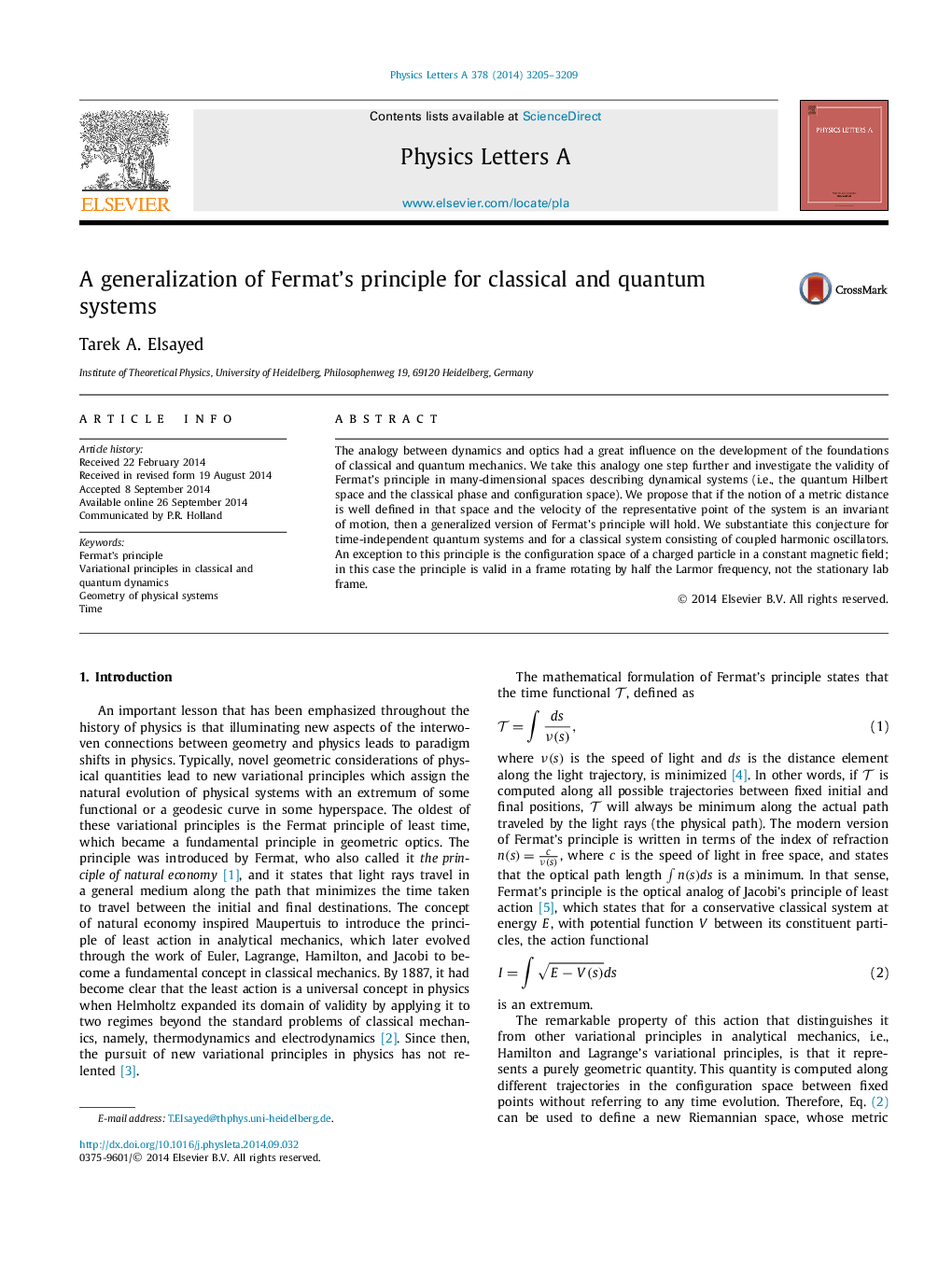| کد مقاله | کد نشریه | سال انتشار | مقاله انگلیسی | نسخه تمام متن |
|---|---|---|---|---|
| 1859744 | 1037371 | 2014 | 5 صفحه PDF | دانلود رایگان |
• Introduces a generalized Fermat principle for many-dimensional dynamical systems.
• Deals with the time taken by the system between given initial and final states.
• Proposes that if the speed of the system point is constant, the time is an extremum.
• Justified for the phase space of harmonic oscillators and the projective Hilbert space.
• A counterexample for the motion of a charge in a magnetic field is discussed.
The analogy between dynamics and optics had a great influence on the development of the foundations of classical and quantum mechanics. We take this analogy one step further and investigate the validity of Fermat's principle in many-dimensional spaces describing dynamical systems (i.e., the quantum Hilbert space and the classical phase and configuration space). We propose that if the notion of a metric distance is well defined in that space and the velocity of the representative point of the system is an invariant of motion, then a generalized version of Fermat's principle will hold. We substantiate this conjecture for time-independent quantum systems and for a classical system consisting of coupled harmonic oscillators. An exception to this principle is the configuration space of a charged particle in a constant magnetic field; in this case the principle is valid in a frame rotating by half the Larmor frequency, not the stationary lab frame.
Journal: Physics Letters A - Volume 378, Issue 44, 12 September 2014, Pages 3205–3209
